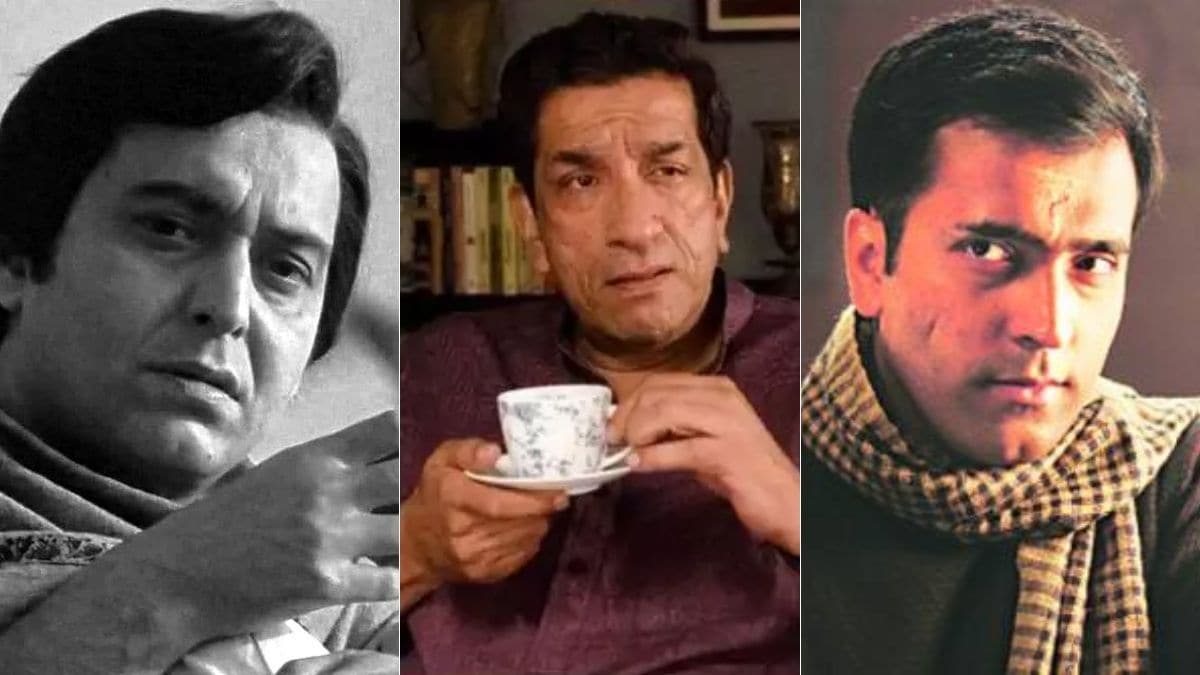The legacy of Feluda: How Satyajit Ray’s super sleuth has been portrayed on-screen through the years
Sep 08, 2021

Satyajit Ray’s Charminar-smoking, mogojastro ( the weapon that is brain) wielding sleuth Prodosh C Mitter is almost synonymous with Bengali nostalgia. Fondly known as Feluda, the young dapper detective was flanked by his two trusted companions — friend and pulp detective novelist Lalmohan Ganguly and cousin Topshe. Occasionally, he’d be aided by Sidhu Jyatha, the man with an unfathomable spectrum of knowledge. Armed with a wry wit and a keen observation skill, Feluda traversed from Darjeeling to Kathmandu, Lucknow to Jaipur, solving seemingly unsolvable cases. In fact, it was this spirit of adventure, along with the thrill of watching pieces fall in place, that resonated with the middle-class Bengali spirit of travel, as noted in Sagnik Chatterjee’s 2017 documentary Feluda: 50 Years of Ray’s Detective.
The character first appeared in the Bengali magazine Sandesh in 1965; he was a tall, athletic man who depended on his cognitive abilities to solve crimes, which he considered to be intricate jigsaw puzzles. He also owned a Colt revolver, but rarely ever used it. There are over 35 stories on the trio, but the film adaptations have been fewer in number, 10, to be precise. Out of these, seven were directed by Satyajit Ray’s son, filmmaker Sandip Ray. The legendary auteur himself adapted two iconic Feluda novels to screen — Joy Baba Felunath (1979) and Sonar Kella (1974).
In Joy Baba Felunath Feluda is pitted against the rich, conniving businessman called Maganlal Meghraj (Utpal Dutta), frequently dubbed as the James Moriarty to Feluda’s Sherlock Holmes. Set in the ghats of Varanasi, the action unfolds inside dingy, intertwined lanes of Kashi as a family begin their grand preparations for Durga Puja in their decrepit ancestral house. The film was heady with the sights, sounds and smells of the city choked with memories of a by-gone era. The skeletal buildings cascade the winding roads making them almost imperceptible to the unobservant eye. Varanasi was Maganlal Meghraj — twisted and religious.
Like in Joy Baba Felunath, Sonar Kella was an ode to the forgotten history of Rajasthan. Ray’s story integrated concepts of rebirth with the mystical, arid landscape of Jaipur freckled with forts and palaces, markets and museums. Both Sonar Kella and Joy Baba Felunath take the Hitchcockian approach, where the audience can identify the villains, but the characters remain unaware until the final curtain call. The cinematic adaptation of Sonar Kella, Ray’s first Feluda movie, generated insurmountable interest in viewers who accepted the charming Soumitra as Feluda with open arms. Similarly, Santosh Dutta’s goofy and earnest Jatayu set precedence for all Jatayu reproductions on screen.
Years later, the cultural hero was refurbished when Sandip Ray took over the baton to helm Feluda movies. The films saw Sabyasachi Chakraborty step into the shoes once worn by Soumitra Chatterjee — and the differences in how they perceived the character was evident from the films’ overall ethos.
Chakraborty’s Feluda was older, more well-built, and was given to using his revolver more frequently. He became the quintessential Bengali action hero, who is as perceptive on his couch as he is inside a dense forest taking on a Royal Bengal Tiger (in Royal Bengal Rahasya, 2011). Sandip Roy’s Feluda films are set in the 21st century, where technological impediments no longer delayed the process of communication. The first Feluda film he ever directed was Bombaiyer Bombete, where Feluda was seen engaging in fistfights, combats and chase scenes. The anachronistic iteration received divided critics and viewers — one faction lauded Sandip’s audacious stance of not regurgitating similar films like his father. The others were outraged by the film’s lack of acknowledgement of the “bhadralok” (erudite, eclectic Bengali bourgeoisie) culture. They argued that Sandip has lost Feluda’s groundedness to razzmatazz, and the reproduction felt more like a homage to the adventure-action genre than to Ray’s one-of-a-kind hero. Frequent changes in casting didn’t help either — in the 2010 film Gorosthaney Sabdhan Paramabrata was replaced by Saheb Bhattacharyya as Topshe.
However, not all Sandip Ray directorials suffered similar fates. Royal Bengal Rahasya for instance, became a superhit on its release in 2011. Sandip wove a rich, detailed tapestry of a life far removed from the urban jungle. In Royal Bengal Rahasya the characters belonged to a forest settlement near Bhutan, where days were spent idling with old texts and manuscripts, and nights were spent in fear of the big feline attack. Similarly, the 2014 film Badshahi Angti witnessed Abir Chatterjee assuming the role of the iconic private eye. Casting a much younger actor in the role, while ridding the hyper-masculine version for the role, harked back memories of the young Chatterjee in muffler and mules.
Films aside, Feluda was also adapted multiple times for the small screen. Among the telefilms were Baksho Rohoshyo, Gosaipur Sargaram, Sheyal Debota Rahasya and Joto Kando Kathmandu te all of which released between 1996-97. But the magic of Feluda was not limited to Bengali content. Shashi Kapoor made waves when he essayed the part in a 1985 telefilm Kissa Kathmandu Kaa (also directed by Sandip Ray). But the series was met with resounding criticism over Kapoor’s overweight detective schtick. Further, Mohan Agashe’s mannerisms overshadowed the innocence of Jatayu, thereby robbing the show of its authenticity.
From Srijit Mukherjee to Parambrata Chatterjee, Feluda remains the cult figure who is mined even now to engage the audiences. Both the personalities have adapted Feluda for the web; Parambrata Chatterjee’s Feluda and Srijit Mukherjee’ Feluda Ferot have both experimented with the narrative proper. However, Ray purists still argue that the auteur’s films continue to remain the most authentic versions of the original stories, hoping one day, their favourite childhood hero will get a treatment that’s fitting of Ray’s legacy.
Share